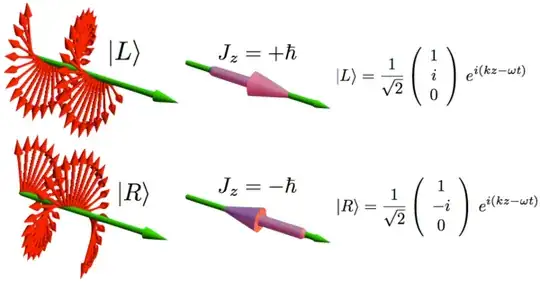This question has nothing in common with the question it is proposed to be duplicate e.g about virtual photons. The question is about a real radiation field where is known that no virtual photons exist.
The electric field E moving up and down (in its value) as a sinusoidal wave, which has been regularly shown in EM books should move a probe electron up and down (in space). How does a photon picture make this pattern, as the photon is moving forward (not up and down) its momentum is perpendicular to E? Of course there is also magnetic momentum but it is too faints. If one uses Feynman diagrams (as is proposed in the answer of Lubos in the proposed duplicate question) for electron photon scattering the momentum of the electron should also be in the photon's direction and not perpendicular as the EM picture suggests.

